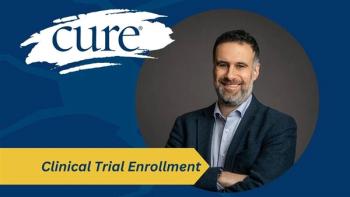
Higher Risk of Thyroid Cancer Among Those With Breast Cancer History
According to a recent analysis of a large national database, patients with a history of breast cancer have a higher risk of developing thyroid cancer than the general population, particularly if they receive adjuvant radiation therapy.
According to a recent retrospective cohort analysis of a large national database, patients with a history of breast cancer have a higher risk of developing thyroid cancer than do the general population, particularly if they receive adjuvant radiation therapy.
Lead investigator Jennifer H. Kuo, assistant professor of surgery at Columbia University, New York City, presented these findings on March 5, 2015, at The Endocrine Society’s 97th Annual Meeting in San Diego, Calif.
“There should be a greater awareness [of the link between the cancers] so patients can be treated appropriately in a timely manner,” says Kuo.
Although several single-institution studies have proposed an increased risk of thyroid cancer in patients with a history of breast cancer, analysis of a population-based sample across multiple institutions had not been performed previously. The retrospective analysis by Kuo and colleagues at the National Cancer Institute’s Surveillance, Epidemiology, and End Results 9 (SEER 9) investigated data in patients diagnosed with breast and/or thyroid cancer from 1973 to 2011.
This study included data on 707,678 patients with breast cancer and 49,663 patients with thyroid cancer. Of these, 1526 patients had developed thyroid cancer after a diagnosis of breast cancer. These patients were compared with patients who developed only breast or only thyroid cancer, respectively.
Although Kuo indicated that multiple factors likely play a role for the association between the two cancers, she stated that adjuvant radiation therapy for breast cancer probably contributes to future development of thyroid cancer. A greater proportion of patients who developed thyroid cancer after breast cancer received adjuvant radiation therapy compared with those with breast cancer only (47.9 percent versus 44 percent).
Patients who subsequently developed thyroid cancer also had smaller breast cancer tumors and a greater percentage had invasive ductal carcinoma than did patients with breast cancer only. According to Kuo, patients with smaller tumors generally tend to receive lumpectomy followed by adjuvant radiation therapy, while patients who have larger tumors often have a mastectomy (which does not require adjuvant radiation therapy).
“The pendulum has definitely swung toward breast conservation therapy [for treatment of breast cancer], and that has only been made possible with radiation therapy,” says Kuo.
The researchers also found that patients with thyroid cancer and a history of breast cancer had a greater incidence of tall-cell variant papillary, oxyphilic variant follicular or anaplastic thyroid cancers. Kuo stated that these more aggressive forms of thyroid cancer are often associated with previous radiation exposure.
According to Kuo, the median interval between the diagnosis of breast and thyroid cancers is consistent with general findings on radiation-induced cancers, which further supports a potential link between radiation therapy for breast cancer and subsequent development of thyroid cancer. However, according to Kuo, this link does not suggest a need for alternatives to current indications for radiation therapy in breast cancer.
“I don’t think it’s a big enough argument to make against adjuvant radiation therapy [for treatment of breast cancer],” says Kuo.
Although the study did not investigate the contribution of systemic factors, Kuo pointed to the possible influence of estrogen in both cancers. She indicated that hormones, particularly estrogen, are likely involved in development of breast cancer and that some literature supports a link between estrogen and incidence of thyroid cancer.
Kuo plans to investigate whether tamoxifen, a common therapeutic agent used for five years after breast cancer diagnosis, is associated with an increased risk of thyroid cancer. Although Kuo indicated the mechanism responsible for a potential link is unclear, she suggested it may be related to estrogen.
“We do know tamoxifen is estrogen related, and there is evidence to suggest that estrogen increases the incidence of thyroid cancer,” says Kuo.
According to Kuo, the study results indicate that patients with a history of breast cancer should receive a dedicated thyroid examination every year for the first five years after breast cancer diagnosis, particularly if they had received radiation therapy for breast cancer.
Furthermore, Kuo indicated that researchers must have an improved understanding of the etiology behind the rising incidence of thyroid cancer following breast cancer to improve diagnosis and treatment.





